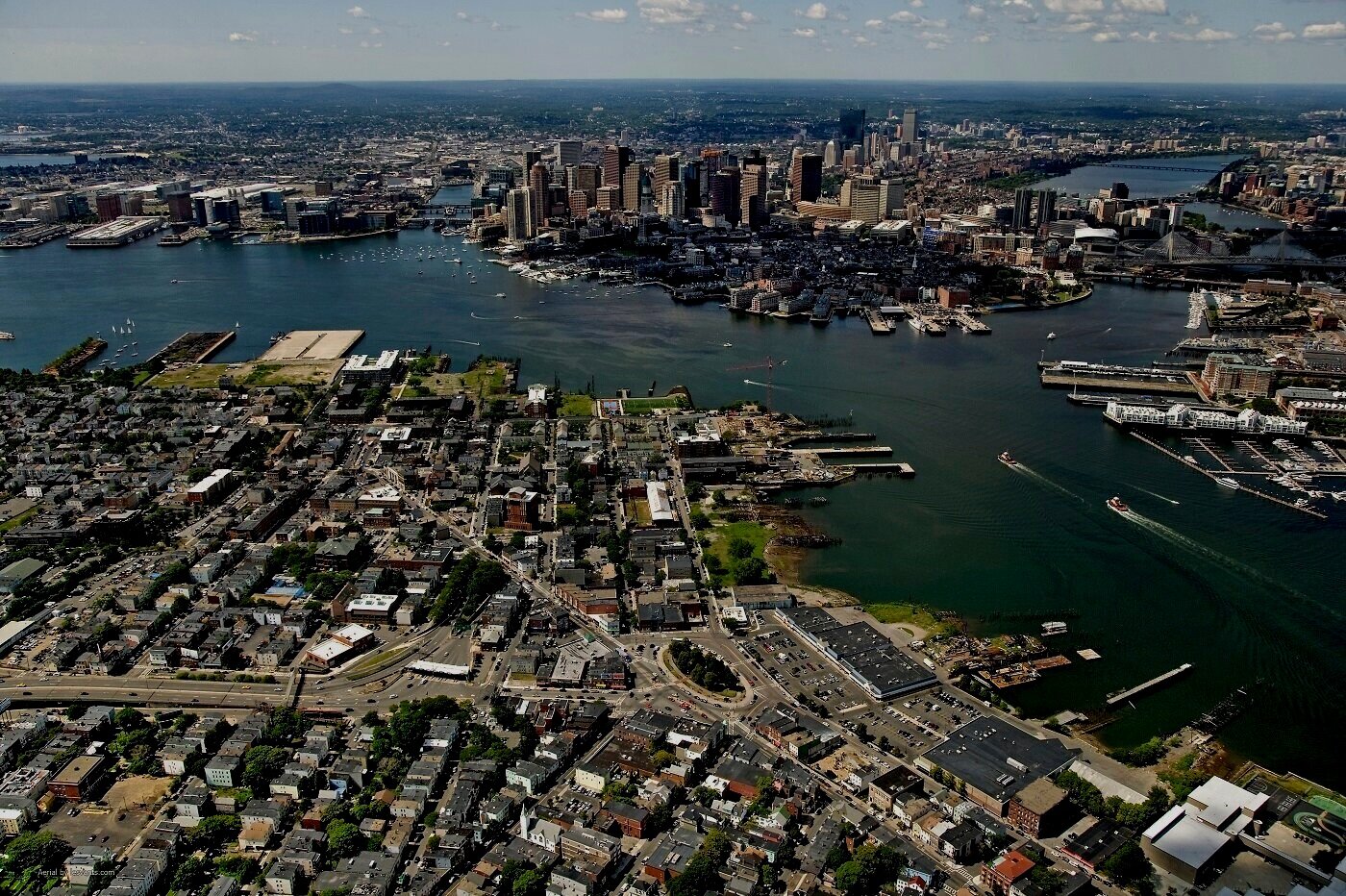
Neighborhood of Immigrants.
Nearly half of East Boston’s residents were foreign-born in 2018, the greatest share of any neighborhood in the City of Boston. The top five countries of origin are El Salvador, Colombia, Mexico, Dominican Republic and Brazil. 13% of the immigrants are naturalized citizens and 35% are non-citizen. East Boston is a multilingual neighborhood with 57% of East Boston households speaking only Spanish.
Sources: Boston by the Numbers 2020 This report by the BPDA Research Division Boston in Context-Neighborhoods 2015-2019 American Community Survey
Changing Racial Composition
In 1970, East Boston had less than 500 Latinx residents. By 2015 more than half of the population was Hispanic. Today, East Boston's total population grew 6.3% from 40,508 to 43,066 in 2020; 50% of East Bostonians being foreign-born and 64% of the neighborhood is home to Latinx immigrants from Central and South American and most recently an emerging Arabic and Black Indigenous People of Color (BIPOC). While East Boston makes up 7% of Boston’s total population, it is home to more than 20% of the city’s Latino population, the largest Latino community in the City of Boston.
2020 U.S Census Redistricting Data Release August 2021 BPDA Research Division
Challenges We Face
Income
Many residents work in service occupations, one of the lowest paid sectors of the economy and hardest hit by the economic downturn. In 2009, the median household income in East Boston ranged from $16,445 in Maverick Landing to $58,290 in Orient Heights. Today, the median household income is $60,510 with 41% of households earning less than $50,000 and 16% living below the poverty rate making up 6% of Boston poverty rate
Rising Rents
Rents in East Boston rose 22% in just one year (2012-2013) according to the Boston Business Journal. For the past few years, East Boston waterfront, small and large economic development projects are having a serious impact on the makeup of the community, with many neighbors feeling it is leaving many of our family and friends displaced from a neighborhood they’re rooted and engaged in transforming to the charming, diverse island they called home. So far, more than 900 luxury apartments, with developers seeking $3,000 rents that currently only 8% of East Boston residents that make more than $125,000 a year will be able to afford these rents without being “rent burdened”.
Education
Education is a key factor in determining your income, wealth, career and civic engagement. In East Boston 27% percent of residents have less than a high school education, 28% are high school graduates and only 19% have a Bachelor’s degree or higher. East Boston High School four-year graduation rate in 2017 was 75%, a seven point increase from 68% in 2016. Overall the school’s rate has risen by 27% points over the past decade, climbing from 48% percent in 2007 where only 55% of East Boston High School students were graduating within 4 years, and the dropout rate for the 2006-07 school year was 11.3%, compared with 3.8% for the state. In 2021, 82% of East Boston High School were Latinx students with 89% graduating within four years, 8% drop out rate and 2% still in school.
Political leadership
For the past two decades East Boston’s political leadership has not reflected its new constituents and emerging Latinx immigrant community. The local political leadership’s power-base is concentrated in a particular geographic area of East Boston, populated mostly by non-Hispanic Whites. Also, with over 70% of residents being renters, there is little incentive for local politicians to be accountable to potentially transient residents. In 1980, 11,981 East Boston residents cast ballots, but only 6,469 voted in 2010 — the steepest decline in the city. It is imperative that East Boston has a united and robust civic participation; it's part of the recipe of shifting public policies and ensuring that participatory democracy principles and public elected officials are accountable to the community since voting is key to make politicians take notice.

